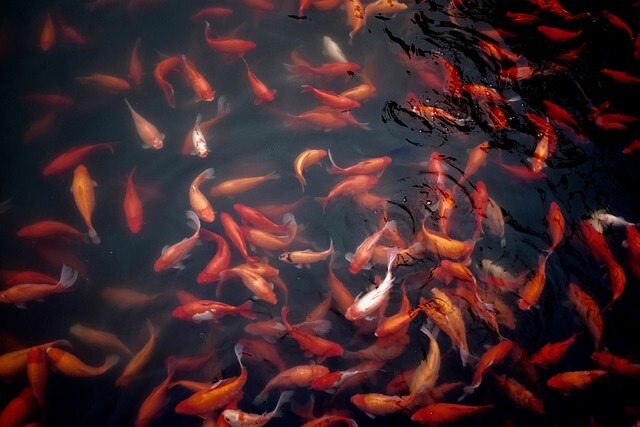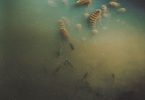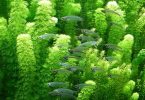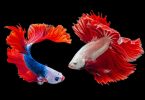Table of Contents
Are you thinking about getting a goldfish as a pet? One of the most important things to consider is the kind of water your goldfish needs to thrive. Goldfish are freshwater fish and require specific water conditions to stay healthy.
When it comes to goldfish, water quality is crucial. Poor water quality can lead to health problems and even death. Goldfish need clean, well-oxygenated water that is free of harmful chemicals and toxins. The temperature, pH level, and water hardness are also important factors to consider.
In this article, we will discuss the ideal water conditions for goldfish and how to maintain them. Whether you are a new goldfish owner or an experienced fish keeper, this article will provide you with valuable insights into what kind of water your goldfish needs to thrive.
Water Requirements for Goldfish
When it comes to keeping goldfish, providing them with the right kind of water is crucial. In this section, we’ll take a closer look at the freshwater requirements for goldfish.
Freshwater vs Saltwater
Goldfish are freshwater fish, which means they cannot survive in saltwater. If you want to keep goldfish, you must provide them with freshwater that is clean, clear, and free of any harmful chemicals or toxins.
Temperature
Goldfish prefer cooler water temperatures ranging from 62-72 degrees Fahrenheit. It’s important to keep the water temperature consistent as sudden changes can stress out your fish.
A good way to maintain the temperature is by using a heater or chiller, depending on the season and the climate in your area.
pH Level
Goldfish water should have a pH level between 7.0 and 8.4 to keep them healthy. A pH level that’s too low or high can make them sick. You can use a pH testing kit to monitor the pH level of your goldfish’s water and make adjustments as necessary.
Water Hardness
To avoid health issues for your goldfish, maintain water hardness levels between 200 and 400 PPM (measured in GH). A reliable filter can keep the water clean and remove any excess minerals or chemicals that may affect water hardness.
In summary, providing the right kind of water for your goldfish is essential for their health and well-being.
Make sure to maintain the water temperature, pH level, and water hardness within the recommended ranges and use a good filtration system to keep the water clean and clear.
Water Quality
When it comes to keeping your goldfish healthy and happy, water quality is crucial. Poor water quality can lead to a range of health problems for your fish, including stress, disease, and even death. In this section, we will look at the key factors that affect water quality for goldfish.
Ammonia and Nitrite Levels
In your goldfish tank, keeping an eye on ammonia and nitrite levels is crucial. Both of these compounds are toxic to fish in high concentrations.
Ammonia is produced by fish waste, uneaten food, and decaying plant matter. Nitrite is produced by the breakdown of ammonia by beneficial bacteria in your filter.
Ideally, you want your ammonia and nitrite levels to be as close to zero as possible. If you detect high levels of either of these compounds, you should take immediate action to address the problem.
One of the best ways to keep ammonia and nitrite levels in check is to perform regular water changes.
To monitor the levels of these compounds in your tank, a test kit can also be used.
Nitrate Levels
While ammonia and nitrite are toxic to fish, nitrate is less harmful. However, high levels of nitrate can still cause health problems for your goldfish over time.
Nitrate is produced by the breakdown of nitrite by beneficial bacteria in your filter. It is also produced by fish waste and uneaten food.
To keep nitrate levels in check, you should perform regular water changes and avoid overfeeding your fish. You can also use a test kit to monitor nitrate levels in your tank. Ideally, you want your nitrate levels to be below 40 ppm.
Chlorine and Chloramine
Tap water often contains chlorine and chloramine to eliminate harmful bacteria and organisms. While these chemicals are important for keeping your drinking water safe, they can be harmful to your goldfish.
Before adding tap water to your goldfish tank, you should treat it with a dechlorinator to remove any chlorine or chloramine. You can find dechlorinators at your local pet store or online.
Another option is letting tap water sit out for 24 hours to allow chlorine to evaporate, but it’s less dependable.
By keeping a close eye on ammonia and nitrite levels, monitoring nitrate levels, and removing chlorine and chloramine from your tap water, you can ensure that your goldfish have the clean, healthy water they need to thrive.
Water Changes
As a responsible goldfish owner, keeping the water in your goldfish tank clean is crucial to ensure your fish stay healthy.
Proper goldfish care includes water changes, which can make the difference between a healthy fish in suitable water and a fish in poor quality, hazardous water.
Frequency
The frequency of goldfish water changes depends on tank size, the number of fish, and the filtration system’s efficiency.
As a general rule of thumb, it is recommended that you change 20-25% of your tank’s water every week. If you have a heavily stocked tank, you may need to change more frequently, up to 50% of the water every week.
Amount
When changing your goldfish water, it is important to only change a portion of the water, rather than changing all of it at once. Changing all of the water at once can cause a shock to your fish’s system, which can be harmful to their health.
As mentioned, you should aim to change 20-25% of your tank’s water every week. This means that if you have a 20-gallon tank, you should change 4-5 gallons of water every week.
It is important to note that you should never change more than 50% of your tank’s water at once. Doing so can cause a sudden change in water chemistry, which can be harmful to your fish.
Additionally, you should always use a water conditioner when adding new water to your tank. Water conditioners help to remove harmful chemicals, such as chlorine and chloramine, from tap water.
In summary, regular water changes are essential for maintaining a healthy environment for your goldfish.
Aim to change 20-25% of your tank’s water every week, and never change more than 50% of the water at once. Use a water conditioner when adding new water to your tank to remove harmful chemicals from tap water.
Filtration
When it comes to keeping your goldfish healthy and happy, filtration is an essential component of their aquarium.
Without filtration, the water in your tank can quickly become contaminated with waste, which can harm your fish. In this section, we’ll discuss the different types of filters available and how to maintain them properly.
Types of Filters
There are several types of filters available for goldfish tanks, including:
- Internal filters: These filters are placed inside the tank and are ideal for small tanks or for aquariums with low water flow. They are easy to install and maintain, and they come in a variety of sizes to accommodate different tank sizes.
- Canister filters: These filters are placed outside the tank and are ideal for larger tanks or for aquariums with high water flow. They are more powerful than internal filters and can handle larger volumes of water. They are also more expensive and require more maintenance.
- Hang-on-back filters: These filters are attached to the back of the tank and are ideal for medium-sized tanks. They are easy to install and maintain, and they provide good water flow. They are also affordable and come in a variety of sizes.
When choosing a filter for your goldfish tank, consider the size of your tank, the water flow rate, and the type of filter media that the filter uses.
Maintenance
Maintaining your filter is essential to keep your goldfish healthy. Here are some tips on how to maintain your filter properly:
- Clean the filter media regularly: The filter media is the part of the filter that traps debris and waste. It needs to be cleaned regularly to prevent clogging and to maintain good water flow. Follow the manufacturer’s instructions on how to clean the filter media.
- Replace the filter media when necessary: Over time, the filter media can become clogged and lose its effectiveness. Replace the filter media according to the manufacturer’s instructions.
- Check the water flow rate: Make sure that the water flow rate is appropriate for your tank size. Too much or too little water flow can harm your goldfish.
- Check the filter for damage: Regularly inspect the filter for any signs of damage or wear. Replace any damaged parts immediately.
By following these tips, you can ensure that your goldfish tank stays clean and healthy, and your fish can thrive in their environment.
Aquarium Size
When it comes to goldfish, aquarium size is an important factor to consider. Goldfish need plenty of room to swim, eat, and explore. In this section, we will discuss the minimum size requirements and goldfish compatibility.
Minimum Size Requirements
A general rule is to have at least 10 gallons of water per goldfish in the tank. For two goldfish, a 20-gallon tank is recommended. However, this is just the minimum size requirement. In reality, the larger the tank, the better it is for your goldfish.
Goldfish are active swimmers and produce a lot of waste. A larger tank will provide more space for them to swim and reduce the amount of waste buildup. It will also help maintain water quality and reduce the frequency of water changes.
Goldfish Compatibility
When it comes to goldfish compatibility, it’s important to consider the size and type of goldfish you have. Different types of goldfish have different size requirements.
In general, it’s best to avoid mixing different types of goldfish in the same tank. This is because they have different size requirements and may have different temperaments. Mixing goldfish of different sizes can also lead to aggression and competition for food.
If you want to keep multiple goldfish in the same tank, make sure they are of the same type and size. This will ensure they are compatible and can live harmoniously together.
In summary, goldfish need plenty of room to swim and explore. The minimum tank size requirement is 10 gallons of water for every goldfish. However, it’s best to choose a larger tank to provide more space and maintain water quality.
When keeping multiple goldfish in the same tank, make sure they are of the same type and size to ensure compatibility.
Conclusion
In conclusion, providing the right kind of water for your goldfish is essential to ensure their health and happiness.
Remember, goldfish are hardy species and can tolerate a wide range of water parameters. However, providing them with the optimal water conditions will help them live a long and healthy life.
In addition to ensuring the right kind of water, make sure to provide your goldfish with a spacious tank, proper nutrition, and a stimulating environment. With proper care, your goldfish can be a delightful addition to your household for many years to come.







